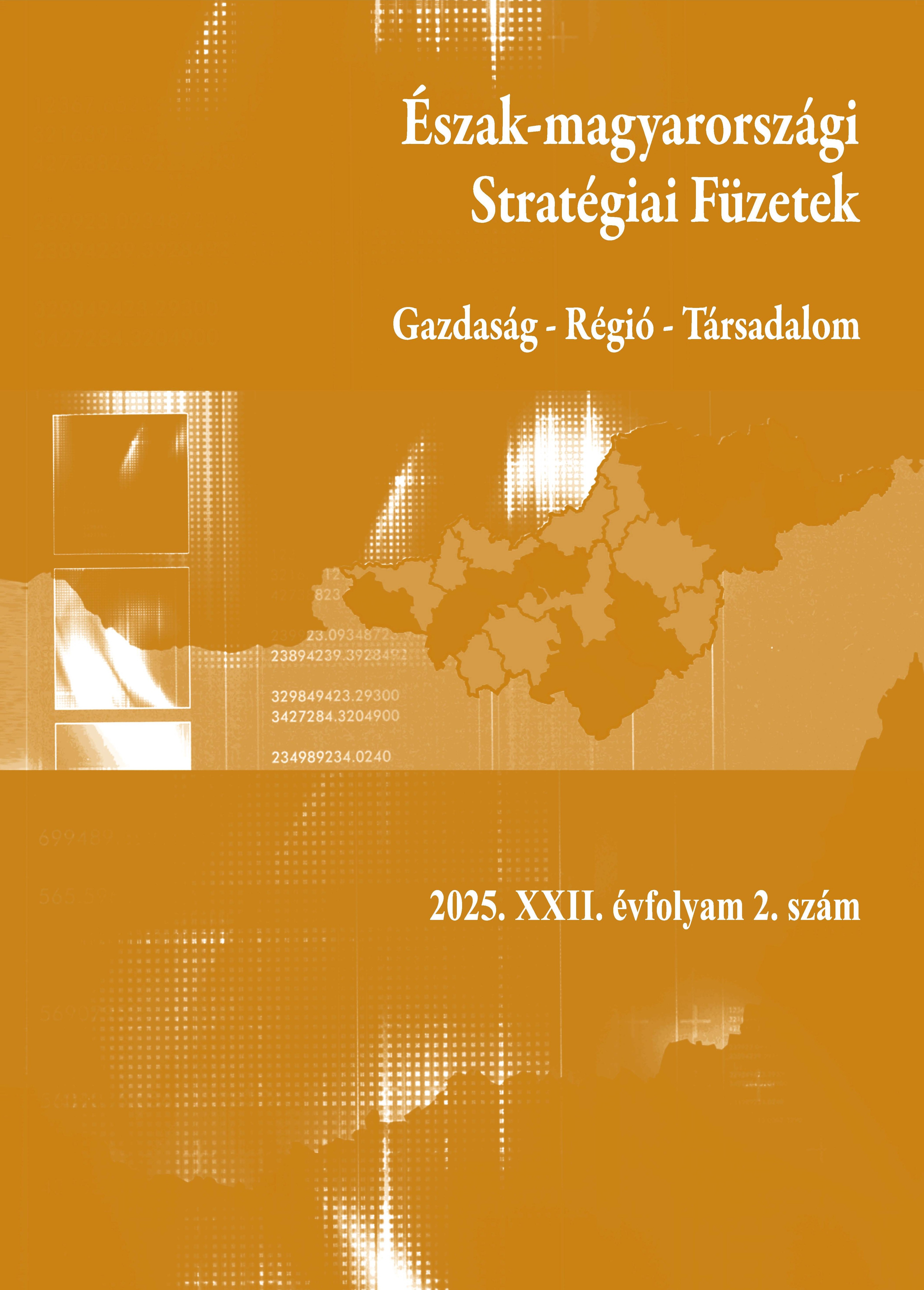General supply chain and healthcare supply chain specificities, as well as outpatient path management in Hungary
DOI:
https://doi.org/10.32976/stratfuz.2025.17Kulcsszavak:
Healthcare supply chain, Innovation, Blockchain technology, Electronic Health Service Space (EESZT), Outpatient management systemAbsztrakt
The healthcare supply chain differs significantly from industrial supply chains due to its focus on human life and health. This necessitates time-sensitive, high-quality, and traceable logistics. It involves multiple stakeholders—manufacturers, distributors, providers, and patients—making it inherently complex. To improve efficiency and resilience, innovative solutions are required. The goal is to offer actionable strategies for a more effective, transparent, and equitable healthcare system. Emphasis is placed on digital tools to address structural issues and enhance care delivery. The study examines digital approaches such as blockchain, automation, and data-driven decision-making. Blockchain enhances traceability and authenticity, while automation improves inventory control and reduces errors. In Hungary, the system struggles with underfunding, workforce shortages, and regional disparities. Digital initiatives like EESZT aim to improve coordination, yet challenges like low digital literacy persist. The COVID-19 pandemic highlighted global supply chain vulnerabilities but also accelerated digital transformation. The study focuses on Hungary’s unique challenges, integrating theory and data to uncover inefficiencies and propose improvements. Findings confirm that modern technologies can significantly improve healthcare quality and sustainability.
Hivatkozások
BOKOR, Z. (2005). Az intermodális logisztikai szolgáltatások helyzetének értékelése, fejlesztési lehetőségeinek feltárása. (Assessment of the status of intermodal logistics services and exploration of development opportunities). Logisztika (Logistics), 10(3), 22-64.
ELLRAM, L. M., TATE, W. L., & BILLINGTON, C. (2004). Understanding and Managing the Services Supply Chain. Journal of Supply Chain Management, 40(3), 17-32. https://doi.org/10.1111/j.1745-493X.2004.tb00176.x
ERTUGRUL, C., & KOZMA, T. (2021). A koronavírus hatása a globális ellátási láncokra (The impact of the coronavirus on global supply chains). Logisztikai trendek és legjobb gyakorlatok (Logistics Trends and Best Practices), 7(1), 5-11. https://doi.org/10.21405/logtrend.2021.7.1.5
FALUS, A., & KISS, L. (2019). Miscellanea. Book reviews. The Electronic Health Service Space (EESZT). Medical Weekly (Orvosi Hetilap), 160(4), 158-160. https://doi.org/10.1556/650.2019.4M
FETTER, B. (2019). A hazai gyógyszeripari vállalatok beszállítói láncának helye a nemzetközi gyógyszeripari ellátási láncokban. (The position of domestic pharmaceutical companies' supply chains within international pharmaceutical supply chains). Logisztikai trendek és legjobb gyakorlatok (Logistics Trends and Best Practices), 5(1), 43-49. https://doi.org/10.21405/logtrend.2019.5.1.43
GELEI, A. (2003). Az ellátási lánc típusai és menedzsment kérdései. (Types of supply chains and their management issues). Vezetéstudomány (Budapest Management Review), 34(7–8), 24-34.
GELEI, A., & GÉMESI, K. (2010). A szolgáltatások ellátási láncának speciális menedzsmentjellemzői (Specific management characteristics of service supply chains). Vezetéstudomány, (Management Science - Budapest Management Review), 41(2), 45-58.
HAFFAR, S., & OZCEYLAN, E. (2025). Blockchain in resilient and leagile supply chains: Research themes and opportunities. Journal of Industrial and Management Optimization, 21(2), 878–908. Scopus. https://doi.org/10.3934/jimo.2024109
HANDFIELD, R. B., & BECHTEL, C. (2002). The role of trust and relationship structure in improving supply chain responsiveness. Industrial Marketing Management, 31(4), 367-382. https://doi.org/10.1016/S0019-8501(01)00169-9
HATTEYER, M., & GÁL, J. (2022). Pharmaceutical aspects of supply chain management. Current Social and Economic Processes, 17(1–2), 51-58. https://doi.org/10.14232/jtgf.2022.1-2.51-58
HAUSMANN, R. (2020). The Transformation of Global Supply Chains in Manufacturing Due to the COVID-19 Pandemic. Hitelintézeti Szemle / Financial and Economic Review, 19(3), 130-153. https://doi.org/10.33893/FER.19.3.130153
HORVATH, L. (2017). Toward smart health care: Building a national health information infrastructure(EESZT) in Hungary. 2017 IEEE 30th Neumann Colloquium (NC), 000011–000012. https://doi.org/10.1109/NC.2017.8263260
KASTOR, J. A. (2003). Governance of Teaching Hospitals: Turmoil at Penn and Hopkins. JHU Press. https://doi.org/10.1353/book.20648
KELEN, A., & KOVÁCS, E. K. (2024). Járóbeteg-irányítási rendszerben történő időpont előjegyzés mérföldköveinek bemutatása a digitális egészségügyet befolyásoló tényezők tükrében (Presentation of the Milestones in Appointment Scheduling within the Outpatient Management System in Light of the Factors Affecting Digital Healthcare). IME, 23(KSZ 1.), 31-37. https://doi.org/10.53020/IME-2024-KSZ-104
KIRÁLY, É., HEGEDŰS, F., & DOMBORÓCZKY, Z. (2023). Globális ellátási láncok aktuális kihívásai (Current Challenges of Global Supply Chains). Multidiszciplináris kihívások, sokszínű válaszok - Gazdálkodás- és Szervezéstudományi folyóirat (Multidisciplinary Challenges, Diverse Responses - Journal of Management and Organization Science), 1, 55-92. https://doi.org/10.33565/MKSV.2023.01.03
LANGABEER, J. R., II, J. R. L., & HELTON, J. (2016). Health Care Operations Management: A Systems Perspective. Jones & Bartlett Publishers.
MIN, H. (2016). Global Business Analytics Models: Concepts and Applications in Predictive, Healthcare, Supply Chain, and Finance Analytics. FT Press.
MIN, H. (2017). Healthcare supply chain research: Where are we going? Logistics Research, 10(5), 1–19. https://doi.org/10.23773/2017_5
MUHAMMAD, T., BABA, S. S., ZARIA, L. T., BABA, M. M., THILZA, I. B., BUKBUK, A. N., UNDIANDEYE, U. J., OKWOR, G. O., & MOSES, A. G. (2010). Potency titration of oral polio vaccine by estimation of live virus content using tissue culture technique. Journal of Applied Sciences Research, 6(3), 229–233.
RAWABDEH, A. (2024). Building a global virtual healthcare system. Journal of Infrastructure, Policy and Development, 8(9), 6765. https://doi.org/10.24294/jipd.v8i9.6765
TISÓCZKI, J. (2022). A mesterséges intelligencia alkalmazása az egészségügyi ellátási folyamatokban (The Application of Artificial Intelligence in Healthcare Delivery Processes). Biztonságtudományi Szemle (Journal of Security Science), 4(2. Ksz.), 137-153.
VAZQUEZ MENDEZ, E. I., BERGEY, P., & SMITH, B. (2024). Blockchain technology for supply chain provenance: Increasing supply chain efficiency and consumer trust. Supply Chain Management, 29(4), 706–730. Scopus. https://doi.org/10.1108/SCM-08-2023-0383
WEBSTER, J. (1995). Networks of collaboration or conflict? Electronic data interchange and power in the supply chain. The Journal of Strategic Information Systems, 4(1), 31–42. https://doi.org/10.1016/0963-8687(95)80013-G
KSH (2025). Healthcare sector data https://www.ksh.hu/stadat
OECD (2025). https://www.oecd.org/en/data.html
##submission.downloads##
Megjelent
Hogyan kell idézni
Folyóirat szám
Rovat
License

This work is licensed under a Creative Commons Attribution-NonCommercial-NoDerivatives 4.0 International License.







